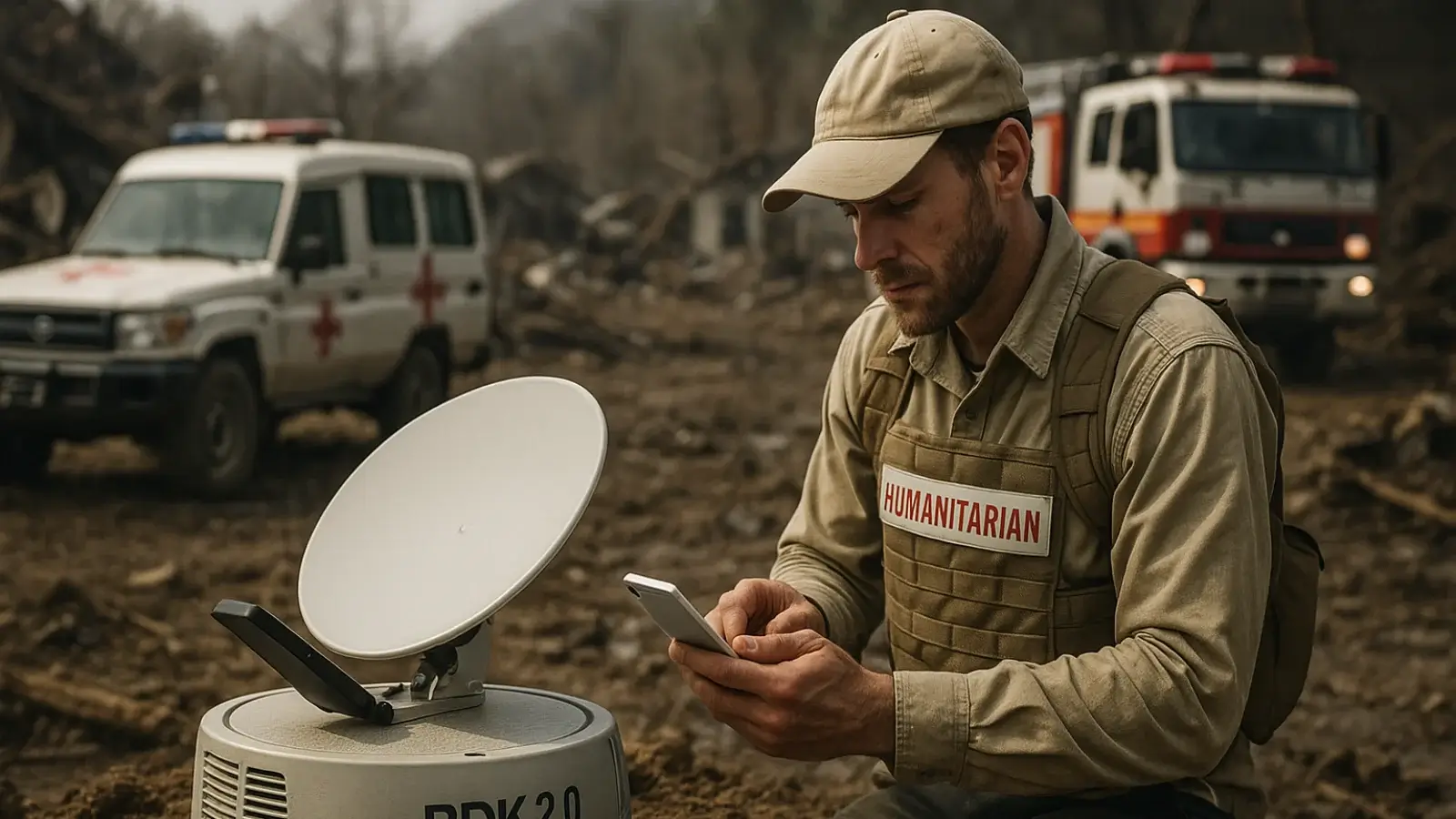


In an era where natural disasters and humanitarian crises are escalating, the need for reliable, rapid-deploy communication systems has never been more critical. Traditional communication infrastructures often falter in these challenging environments, leaving first responders and humanitarian teams disconnected when they need connectivity the most. Recognising this pressing need, IEC Telecom has introduced the RDK 2.0 - a portable, autonomous satellite communication solution powered by Starlink Mini, designed to ensure uninterrupted connectivity in the most remote and demanding situations.
The Rapid Deployment Kit (RDK) 2.0 is a compact, carry-on-sized satellite terminal that redefines critical communications. Equipped with WiFi 5 technology, it supports up to 128 devices simultaneously, ensuring that entire teams can stay connected. Engineered for complete autonomy, RDK 2.0 features built-in batteries, allowing uninterrupted operation without reliance on external power sources. For mobile connectivity, a car kit is available upon request, enabling communications-on-the-move (COTM).
High-Speed Connectivity: Delivers speeds up to 110 Mbps with low latency (~26 ms), ensuring seamless communication in remote areas.
Autonomous Operation: Equipped with two power banks, allowing uninterrupted use without external power sources.
Portable Design: Compact and lightweight (<5 kg), facilitating easy transport and rapid deployment.
Multi-Device Support: Supports up to 128 devices simultaneously via WiFi 5.
Advanced Network Management: Integrated with IEC Telecom’s OptiView dashboard for real-time monitoring and control.
In the aftermath of natural disasters, immediate and coordinated action is paramount. RDK 2.0 enables rapid internet access for humanitarian teams and first responders, ensuring seamless communication. Command centres can maintain real-time visibility of team movements and relay urgent updates instantly, facilitating efficient and coordinated emergency responses.
RDK 2.0 empowers public programmes, such as mobile clinics, legal advisory services, and banking, to reach underserved communities. With reliable on-the-go connectivity, governmental initiatives and critical support can be delivered equally to all, regardless of location.
For NGOs operating in conflict zones or remote areas, RDK 2.0 offers a dependable connectivity companion. Its portability and autonomous power supply ensure that field teams can maintain communication lines, access vital information, and coordinate efforts effectively, even in the most challenging environments.
At the heart of RDK 2.0 is the innovative Starlink Mini antenna, providing high-speed, low-latency satellite connectivity. This ensures that humanitarian teams have access to reliable internet, even in areas where traditional networks are unavailable or compromised. The integration of Starlink technology sets a new benchmark for field connectivity, enabling real-time communication and data transfer essential for mission-critical operations.
RDK 2.0 is seamlessly integrated into IEC Telecom’s advanced network management ecosystem. Through the intuitive OptiView dashboard, technical teams can perform remote maintenance and troubleshooting, while end-users retain full visibility and control over their onboard network. Key Features such as:
Network Management: OptiView allows for the seamless management of satellite communication links, enabling the prioritisation of critical communication channels over less essential ones. This ensures that vital humanitarian operations maintain connectivity even under bandwidth constraints.
Usage Details Reporting: The dashboard provides comprehensive usage reports, detailing data consumption across various applications and devices. This transparency aids in monitoring network performance and identifying potential areas for optimisation.
Credit Limit Control: Administrators can set predefined credit limits for different user groups or services. Once these limits are reached, the system can automatically suspend or restrict access, preventing unexpected overages and ensuring budget adherence.
Advanced Filtration: OptiView offers robust content filtering capabilities, allowing for the restriction of non-essential or potentially harmful content. This ensures that bandwidth is reserved for mission-critical applications and that the network remains secure from external threats.
These features collectively empower humanitarian teams to maintain robust, secure, and efficient communication networks, even in the most challenging environments.
As the frequency of natural disasters continues to rise, with an 83% increase over the past two decades according to the United Nations Office for Disaster Risk Reduction (UNDRR), the demand for robust communication solutions is more pressing than ever. IEC Telecom’s RDK 2.0 addresses this need, providing a reliable, portable, and autonomous connectivity solution that empowers humanitarian missions and public welfare programmes to operate effectively in high-stakes scenarios.
For humanitarian organisations, governments, and NGOs seeking to enhance their operational capabilities, IEC Telecom’s RDK 2.0 offers a transformative solution. By ensuring reliable connectivity in the most challenging environments, RDK 2.0 enables teams to respond swiftly and effectively, ultimately saving lives and improving outcomes in disaster-stricken areas.